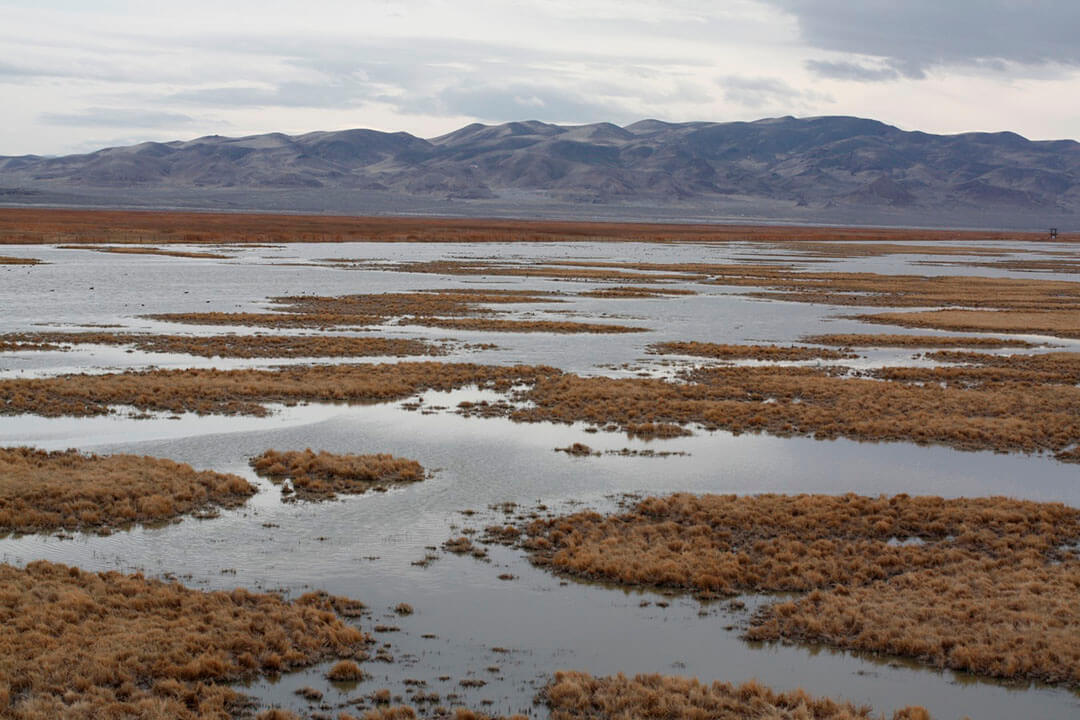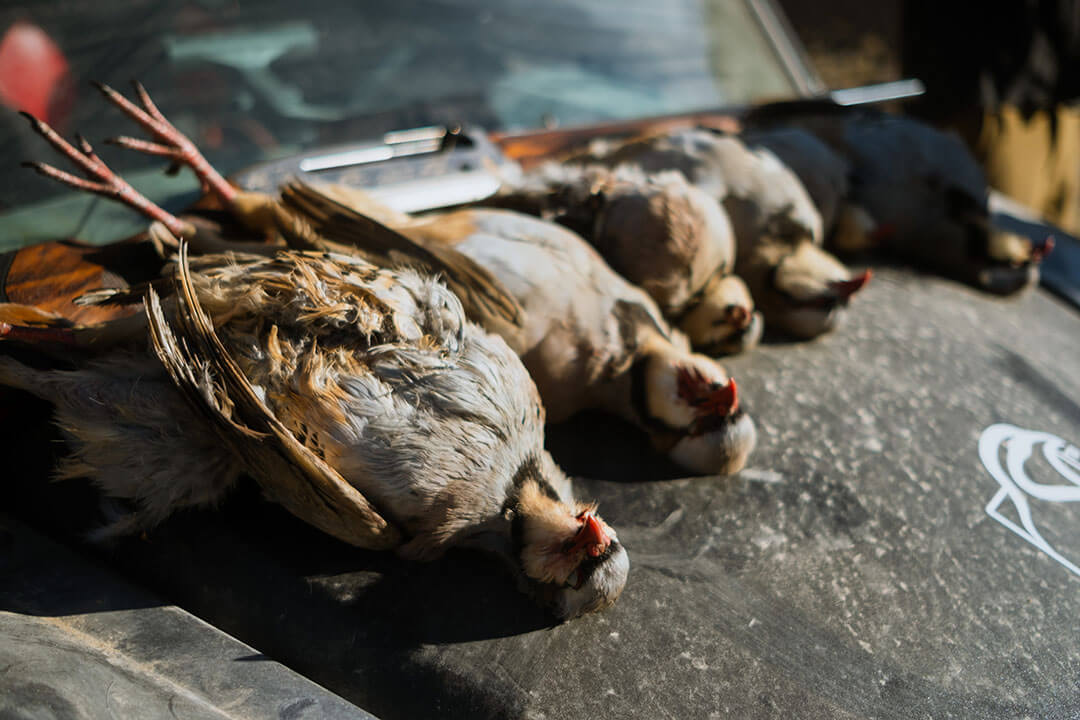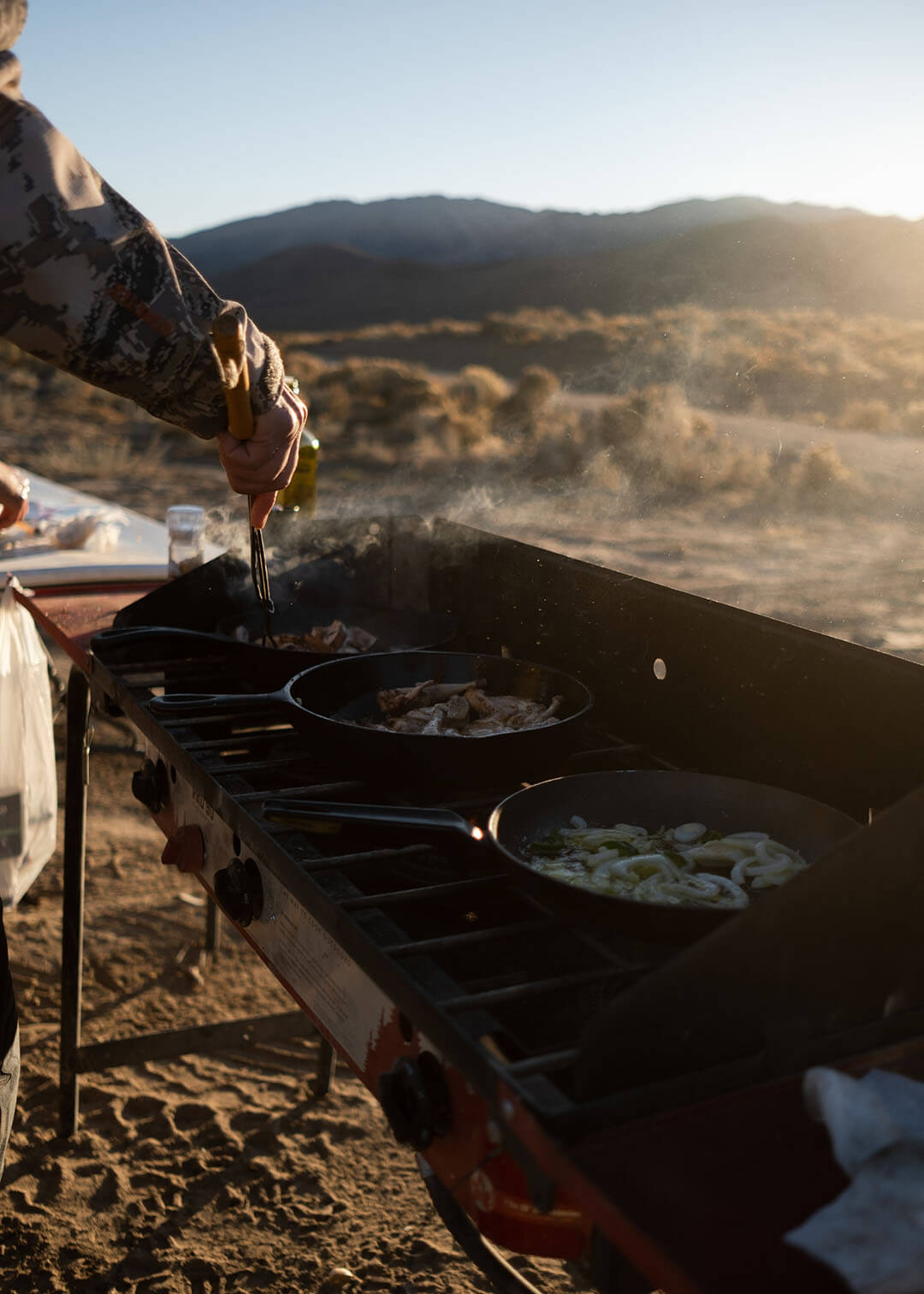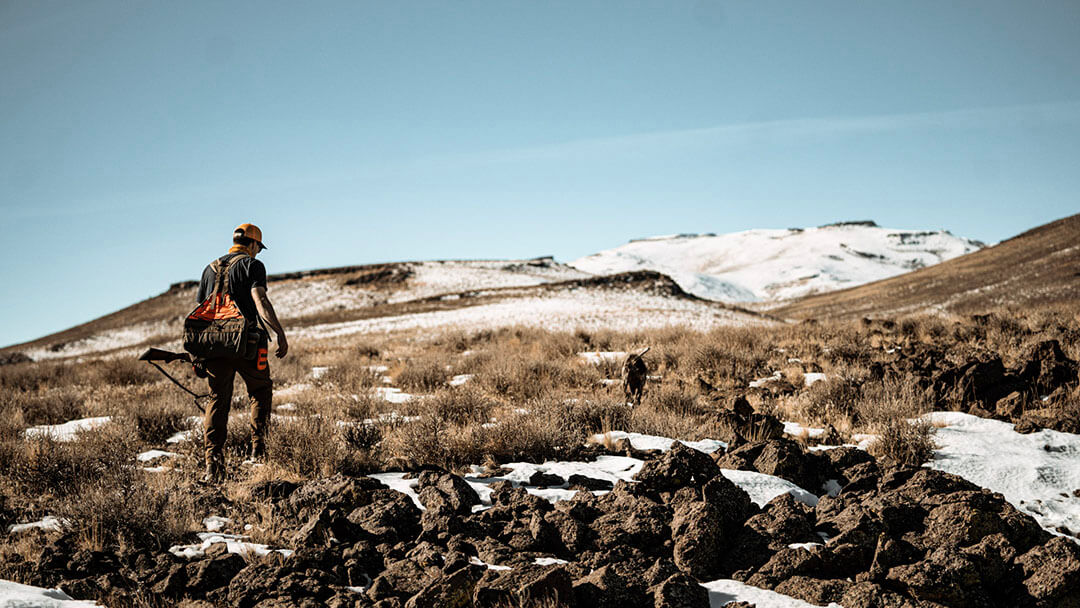Upland and waterfowl hunting links locals to wild foods.
Tucked into an outcropping in the West Humboldt Range is Lovelock Cave. Not far from the intermittently dry lakebed of the Humboldt Sink, the cave was used by the Northern Paiutes thousands of years ago for shelter and storage as they hunted and fished the lush marshes of the ancient lake system. In 1912, after a rediscovery of the cave by bat guano miners, thousands of the tribe’s artifacts were uncovered in an archeological dig, including, most notably, 11 duck decoys made from feathers, paint, and tule growing near the cave. Carbon dating puts these immaculately preserved artifacts at more than 2,000 years old, and they now sit in the Smithsonian’s National Museum of the American Indian in Washington, D.C.
Using bows and arrows as modern-day hunters would shotguns, the Northern Paiutes were the first Nevadans to look in the wetlands, among the sagebrush, and to the sky in search of feathered game to feed their families.
“This was the first evidence that tribal members were making decoys and using them,” says Elmer Bull, treasurer of Nevada Ducks Unlimited. “The discovery was a very big deal.”
Bull grew up in Gardnerville, where he remembers from a young age watching the life cycles of the ducks in the pond behind his house, from nesting and hatching to first flight and migration.
“I started counting them and learning the different species,” recalls Bull, who can easily expound on the biological differences between the deep-diving canvasback duck and the dabbling blue-winged teal. “I was lucky in my days with the Nevada Department of Wildlife (Bull was formerly its habitat division chief) to be involved in habitat management, doing things on the ground to try and improve the living conditions for not only the waterfowl, but also the health of the wetlands themselves, which are arguably the most dynamic ecosystems in the world.”
For Bull and many hunters, hunting and conservation go hand in hand — a concept he has firsthand experience with from his work with NDOW and now the Nevada chapter of Ducks Unlimited, a nationwide nonprofit dedicated to the conservation of wetlands and associated upland habitat for waterfowl. The organization has raised funds for numerous rehabilitation projects throughout The Silver State, including water management and non-native plant removal from the 79,570-acre Stillwater National Wildlife Refuge, a popular waterfowl hunting destination near Fallon.
Though Nevada may be the driest state in the country, wetlands such as the Carson Lake and Pasture near Fallon, the Humboldt Wildlife Management Area near Lovelock, and the Mason Valley Wildlife Management Area in Yerington not only offer important waypoints for migratory birds, but also ample opportunities for public wildlife viewing and recreating, including hunting.

Waterfowl that can be found and hunted in Nevada include ducks, mergansers, geese, swans, coots, and moorhens. During the fall season, hunters lie in wait equipped with waterproof gear, shotguns, decoys, duck calls, and, for retrieval, patient bird dogs. Duck hunting is usually at its best when the weather is at its worst — cold and rainy — Bull notes, but that doesn’t deter true duck hunters from their mission.
“I won’t hunt anything that I’m not going to consume. Hunting and bagging of wild game and using it as food — there’s a primordial gene in all of us that likes to do things like that,” Bull adds. “We know now that the food that comes off wild game is very healthy for us. It tends to be very lean meat. They are not injected with antibiotics or hormones. They are natural.”
Where Your Food Comes From
The sustainability of hunting wild game and the quality of animals’ lives prior to harvest are of the utmost importance to Brett Moseley, chef and owner of Washoe Public House in Reno.
After being introduced to hunting a decade ago by his father-in-law, Moseley found that the act of seeking his meat at the source aligned with his ideals about food as a chef.
“There’s an opportunity for us to get our food in a natural, sustainable way. When you’re buying meat from a store, those animals are treated way more horrifically,” Moseley says. “They are being fed garbage, and everybody just thinks that’s OK. They are just used to buying their meat pre-packaged off a shelf. They don’t think about where any of that comes from and how brutal the meat industry is.”
Over the years, Moseley has worked to transform his menu at Washoe Public House to include more sustainable, ethically raised meat sources such as wild boar, free-range ducks from Sonoma, and lamb from Borda Ranch in Gardnerville. From his own hunts — both big game and upland hunting of chukars, pheasant, and sage hen — Moseley will share meat with his friends, family, and the staff at his restaurant.
“It makes it super special. You had to go through all of that work to get that animal. Killing an animal is not easy, and it’s not enjoyable,” Moseley explains. “It’s part of the process though, and you have to wrangle those emotions and decide what’s more important. Is it more important for you to procure your own food or let somebody else do it and ignore the emotions that go into that?”
It’s a sentiment shared by Kristy Crabtree, a Reno-based hunter who’s been sharing the recipes she develops for preparing wild game on her blog, Nevada Foodies, for more than 15 years. After meeting her husband and accompanying him on hunts as a spotter, she decided it was time to more intimately understand the process that was putting food on their table.
“You look at the food we buy from the store, and you’re so far removed. You don’t know where the scraps go, you don’t know how that animal lived its life, you don’t know if it was penned up or how it was raised. When you actually go hunting yourself, it really settles in the respect that we have for our food, the respect that we have for our animals,” Crabtree says. “You are the one in charge of putting in the time and effort to get that animal, and it’s your responsibility to pull that trigger.”
Ample Public Land
Hunters will tell you there is nothing quite like getting out and experiencing Nevada on foot as your gun dog zigzags through the rabbitbrush in search of upland game birds. Throughout The Silver State, you will find blue and ruffed grouse; sage hen; chukar; Hungarian partridge; snowcock; ring-necked pheasant; California, Gambel’s, and mountain quail; and North American wild turkey.

“Roughly 86 percent of Nevada is public lands, so if you’re able to draw tags and get to go hunt so much area for freezer meat, why not do it?” asks Damon Booth, president of the Chukar Chasers Foundation, referencing Nevada’s lottery system for big game hunts. “Those who don’t draw tags have the ability to hunt upland. And yes, there’s quail and sage hen and Hungarian partridge, but chukar, I like to think, is the most challenging.”

The Chukar Chasers Foundation, the nonprofit branch of the gear brand and community of Nevada chukar hunters, promotes ethical hunting and the preservation of public lands through donations to efforts such as the reseeding of areas affected by wildfires. The foundation also supports youth hunting education through annual mentored chukar hunts with adult members.
Hunting upland game, especially chukar, requires hunters to trek on foot for miles across Nevada’s sprawling public lands in search of birds, with the olfactory guidance of a well-trained bird dog. While most chukar hunters keep word of their favorite stomping grounds close to the vest, there is no shortage of hunter-friendly public spaces to explore in search of upland game.
“It’s not easy. I tend to like it because it’s a challenge,” explains Booth, who grew up chukar hunting in Winnemucca. “You start trekking up a hill and you get into birds only to have them fly all the way down to the bottom. So all day you’re chasing birds. Hopefully people find the fun and enjoyment that it provides — the thrill — and it’s not in the killing by any means. It’s the hard work, the payoff at the end of the day, and the camaraderie among those who are out there with you.”

And sometimes all of that tracking and hiking doesn’t culminate in bagging a single bird, but the reward is spending the day appreciating the beauty of this rugged state and the people you’re with.
“There are so many beautiful places in Nevada to see, and a lot of them happen to be where you get off road and out of the city,” Crabtree adds. “Hunters are the most generous people in the world. They will go out and hunt and bring food back, share it with friends, and give it away. You don’t see people going to the store, buying steaks, and saying, ‘Hey, do you want a steak?’ It’s a really good community, and it’s a respectful community.”
Xenia Pyne never thought she would hunt wild animals. She didn’t know what a chukar was or the difference between an elk and a deer. And she had never held a gun.
She was raised in beachy Santa Barbara, attended college in bustling Los Angeles, and never visited the mountains. Her husband, Travis, grew up in Gardnerville and had had the opposite experience, having been reared in a family of hunters, fishermen, and campers.
“My idea of a hunter was a typical redneck,” she says. “But it’s 180 degrees from that.”
She started hunting with her husband 10 years ago. Her interest was piqued when his family invited them to go pheasant hunting. She enrolled in a hunter safety class and spent hours in a room full of men and boys. Her first hunt was for quail. She strapped on a blazing orange vest and bagged her first bird.
Since moving to Sparks six years ago, her life has been all about fishing alpine lakes and the Truckee River and bird hunting every year. She’s not always successful, which can be frustrating since she’s competitive. But she’s found that the sport is about more than getting a bird.
“It’s crazy and fun,” she says. “You get to know yourself and appreciate nature and the beauty around you.”
Her friends often ask why she would want to kill an animal. She tells them she enjoys knowing where her food comes from and appreciates the process.
“I wish that the general public can understand why people hunt,” she says. “When I started, I didn’t know about the conservation perspective, that it provides for the family, and how hard it is. It’s taught me that I can do hard things. It’s also good for my mental health. Being outdoors helps me connect to myself and values that are important to me. I appreciate the land, food, and family aspects.”
Speaking of family, Pyne’s 5-year-old daughter, Vida, comes along on all their adventures and loves camping, fishing, and identifying animals. She believes that when she’s old enough, she will carry on the hunting tradition.
Claire McArthur has shot a gun exactly twice and scared the bejesus out of herself both times, but as a meat eater and recreationist, she has an immense respect for the time and effort that hunters put into harvesting their own food.
RESOURCES
Chukar Chasers Foundation
Chukarchasers.com/foundation
Nevada Ducks Unlimited
Ducks.org/nevada
Nevada Foodies – Kristy Crabtree’s wild game cuisine blog
Nevadafoodies.com
Washoe Public House
Washoepublichouse.com


